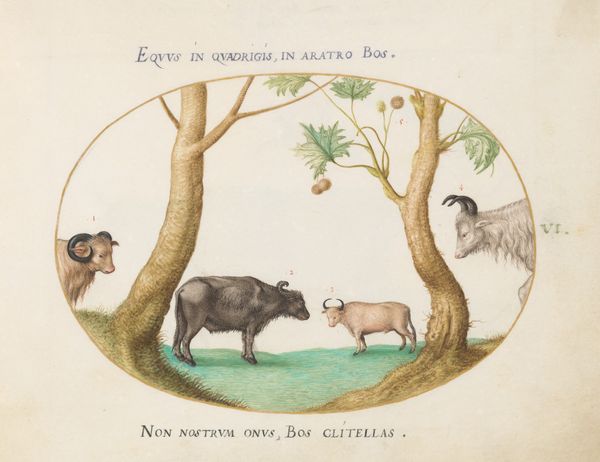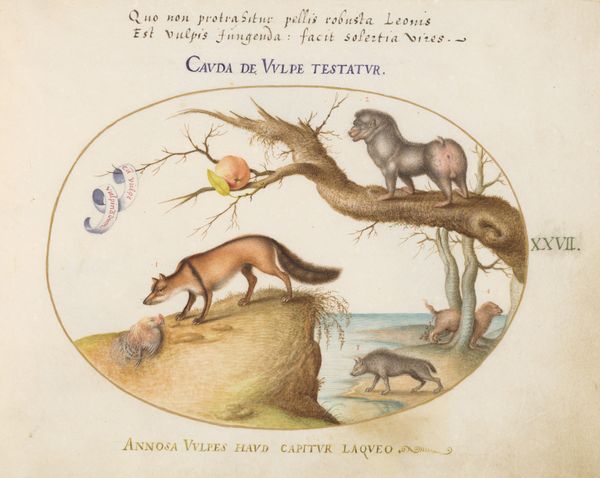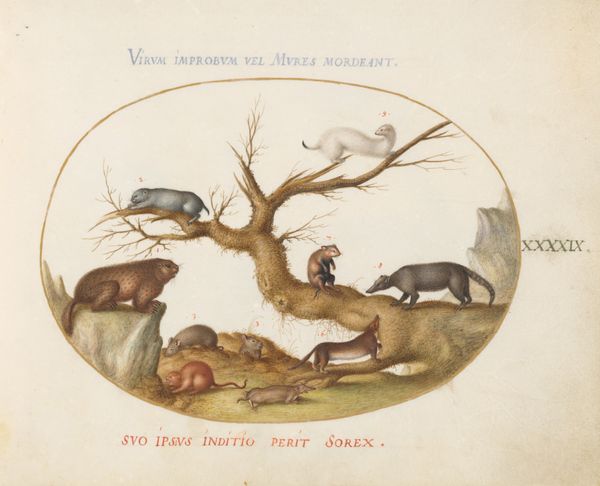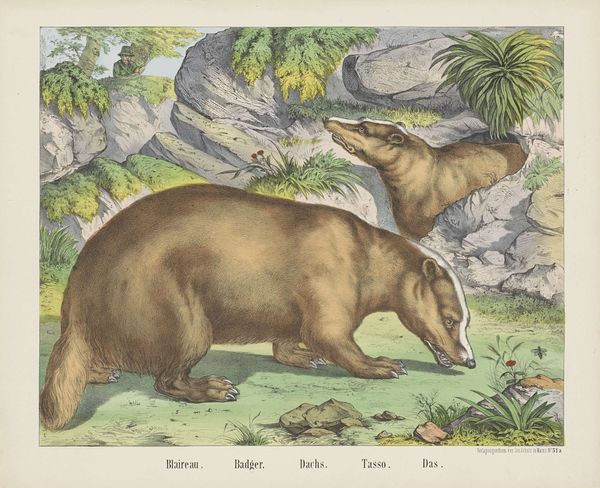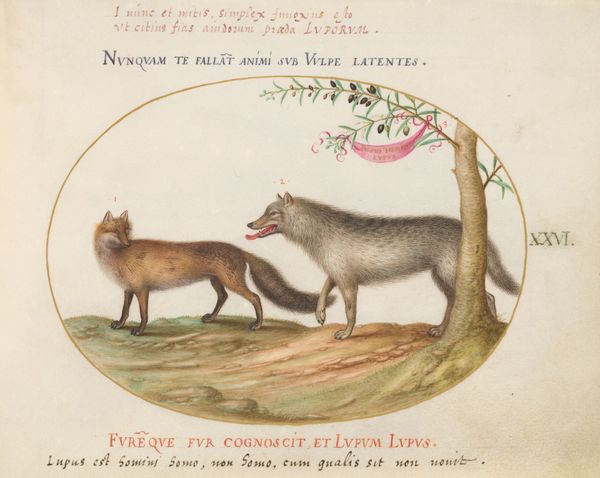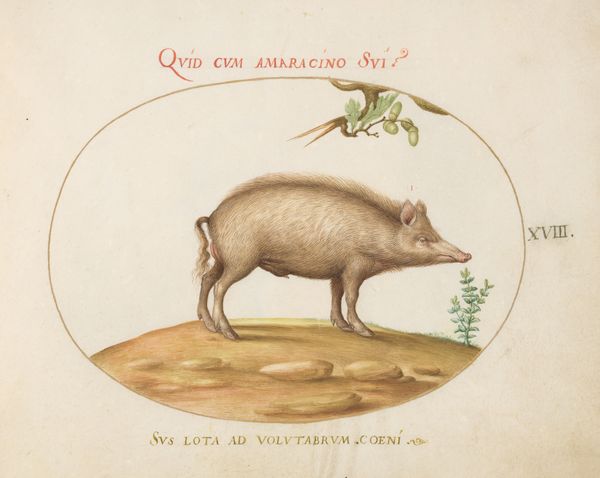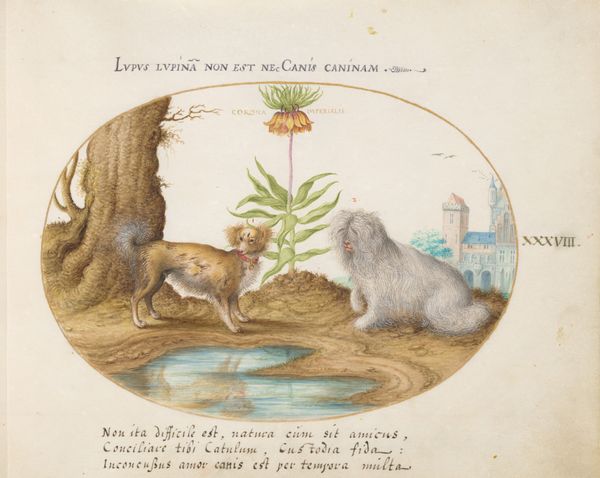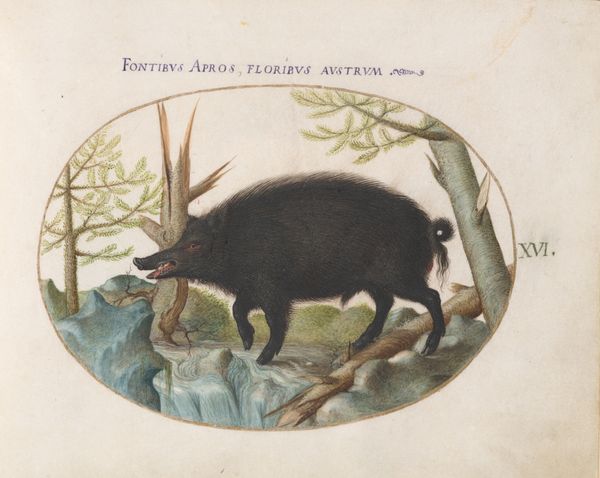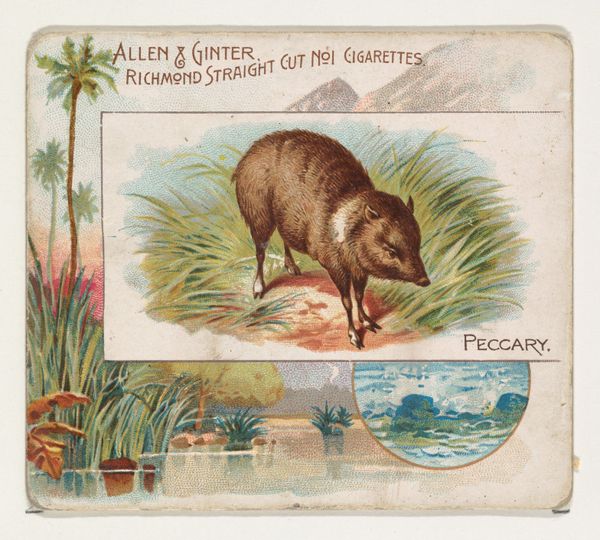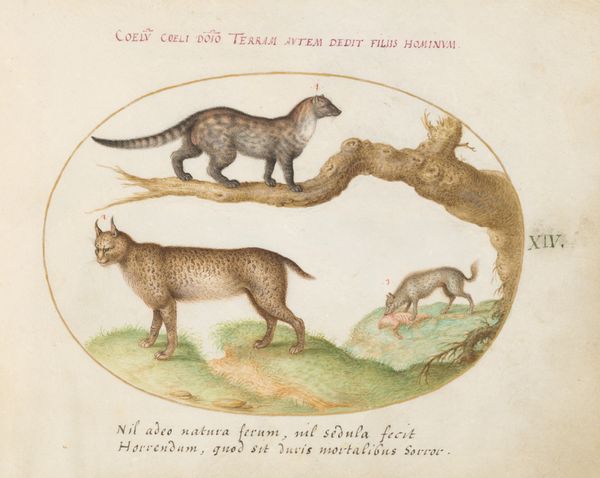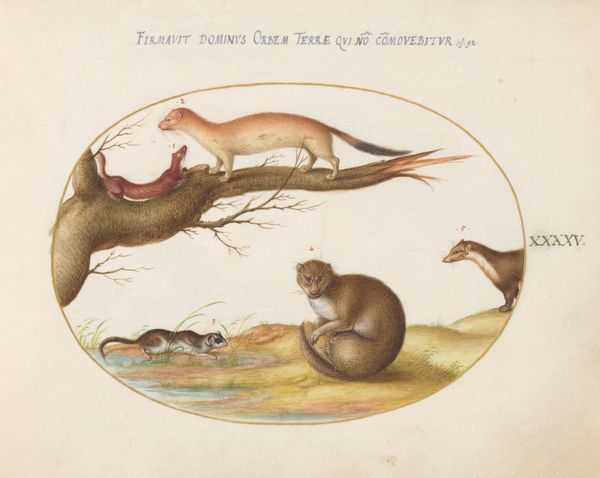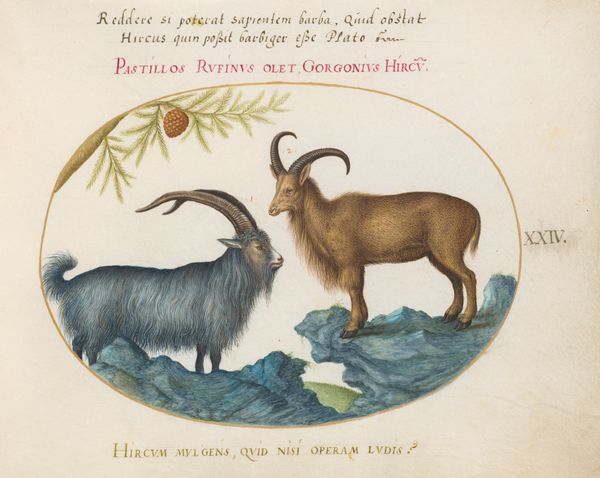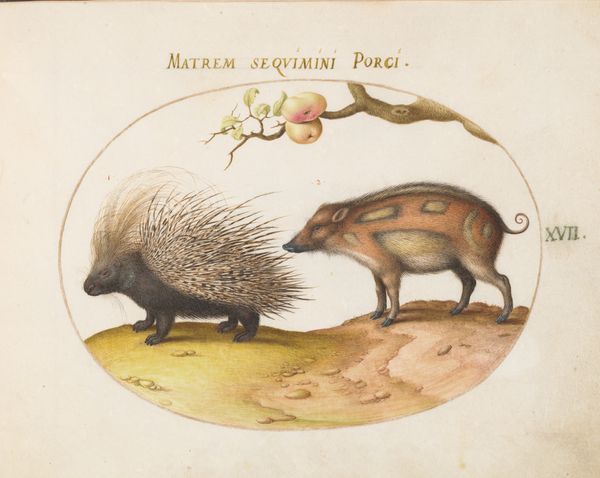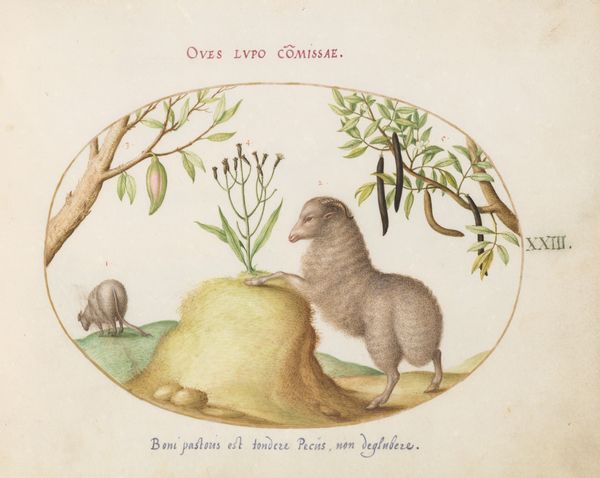
drawing, watercolor
#
drawing
#
aged paper
#
toned paper
#
animal
#
figuration
#
11_renaissance
#
watercolor
#
coloured pencil
#
watercolor
Dimensions: page size (approximate): 14.3 x 18.4 cm (5 5/8 x 7 1/4 in.)
Copyright: National Gallery of Art: CC0 1.0
Editor: Here we have "Plate 15: A Bear and a Lynx(?)," a watercolor drawing with coloured pencil on aged paper, created by Joris Hoefnagel around 1575-1580. I'm struck by the formal arrangement of the bear and lynx – they seem almost posed. What elements of composition stand out to you? Curator: Indeed. Notice how the oval format dictates a specific framing, containing and thereby controlling the naturalistic subjects. The symmetry, however imperfect, emphasizes a structured approach. What significance might you attribute to the interplay of muted tones and textures of the animals and their environment? Editor: I guess I hadn't really thought of it as being asymmetrical because there's one animal on each side, and it looks balanced overall to me, but they aren't in any way a mirrored pose. Do you think this off-balance effect adds a narrative quality, suggesting movement or perhaps a story beyond the image? Curator: It is crucial to recognize the deliberate asymmetry as a means of activating the visual field. Rather than a straightforward narrative, I perceive an emphasis on visual tension and a kind of arrested motion, drawing attention to the inherent dynamism within seemingly static forms. How might the use of specific colours influence our reading of this composition? Editor: The limited palette, dominated by browns, greens and a subtle red, makes each creature almost an earth-toned statue. I do notice how it draws my eye to the textures more. Now I’m wondering how those pigment choices work, with light and shadow, to define their forms. Curator: Precisely. Consider the delicate gradations of color – how they construct volume and delineate surface. There is a masterful understanding of depth achieved through strictly formal devices, regardless of the animals themselves. Ultimately, the effectiveness of the drawing resides not in its representational accuracy, but its masterful command of form and color. Editor: Thanks for the clarity, this has shifted how I perceive this drawing, beyond just its depiction of animals, by recognizing how strategically those elements function. Curator: You're very welcome. Thinking about the pure aesthetics can definitely open up new understandings.
Comments
No comments
Be the first to comment and join the conversation on the ultimate creative platform.
